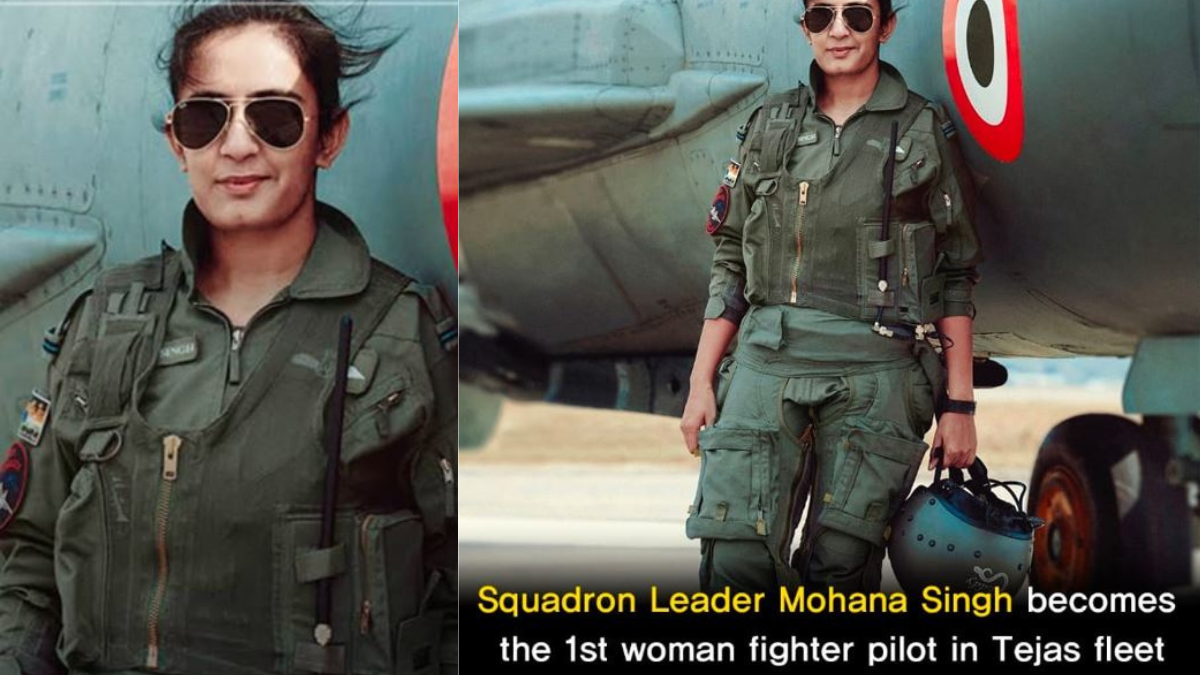The Himalayan night was more than dark—it was like a black curtain wrapped around sharp mountain peaks. At 3:42 AM, everything was silent except for the howling wind. Suddenly—KLUNK. WHIRR. SCREAM. Inside massive military hangars, giant IL-76 aircraft began to power up. But these were not just ordinary flights. And not just any pilots were in the cockpit—women pilots from the Indian Air Force.
This was Nari Shakti in action.
The control panels lit up in green. The women pilots moved with calm, expert hands—every switch flipped with purpose. This was not a drill. It was Operation Sindoor. A real mission. Urgent. Dangerous. They had to move troops fast, through high mountains, thick darkness, and rising tensions at the border. This was not just a routine flight. It was a bold and brave mission, led by women pilots who are rewriting history one flight at a time.
Rajnath Singh’s Salute: More Than Words – A National Reckoning
Days later, the Defence Minister, Rajnath Singh, stood not just to applaud, but to recalibrate the narrative. His words weren’t mere praise; they were tectonic: “These women pilots, during Operation Sindoor, weren’t just participants. They were instrumental. They flew heavy-lift transports through treacherous night skies. This is Nari Shakti – raw, undeniable, operational Shakti.” The significance detonated like a flare. This was combat support aviation at its most critical, executed flawlessly by women at the helm. Singh’s acknowledgment was a formal etching of their prowess into the granite of national security history. No tokenism. No condescension. Pure, unadulterated capability recognized.
Inside the Crucible: Women Pilots Flying Blind, Leading Bold
Forget the sanitized glamour of commercial cockpits. This was strategic airlift, raw and demanding:
- The Gauntlet of Night & Terrain: Flying massive IL-76Inside the Crucible: Women Pilots Flying Blind, Leading Bold laden with troops or critical supplies through the Himalayan darkness is a high-wire act without a net. Vertigo-inducing peaks. Unpredictable microbursts. Navigational black holes. One miscalculation equals catastrophe. These pilots didn’t just navigate; they conquered the void.
- Mastery of the Machine: The IL-76 isn’t flown; it’s wrangled. Four roaring turbofans. Complex, sometimes temperamental Soviet-era systems. Demanding constant, forceful inputs. These women demonstrated not just technical skill, but intimate symbiosis with tonnes of soaring metal.
- Pressure Cooker Decisions: Op Sindoor implied imminent need. Delays? Unacceptable. Weather closing in? Assess, decide, act – NOW. Command authority radiated from their seats. No room for doubt. No margin for error. Their judgment calls carried the weight of mission success and lives.
- Sensor Fusion & Human Grit: Relying on NVGs (Night Vision Goggles) transforming the world into a ghostly green tableau, interpreting a maelstrom of sensor data (terrain-following radar, navigation systems), while maintaining spatial awareness at 25,000 feet demands a cognitive ferocity few possess. They didn’t just see the data; they fused it into instinct.
Beyond the Cockpit: How Op Sindoor’s Women Pilots Ignited a Seismic Ripple
The impact of their successful missions resonates far beyond the flight line:
- Shattering the Quartz Ceiling: Forget glass. The military aviation ceiling was quartz – thicker, harder, seemingly impervious. Op Sindoor didn’t crack it; they pulverized it. They proved, irrefutably, under operational duress, that women possess the physical endurance, mental resilience, and tactical acumen for the most demanding flying roles. No debate left.
- Nari Shakti: From Slogan to Combat Doctrine: Singh’s words codified a shift. Nari Shakti moved from abstract empowerment to tangible, battle-proven asset. It’s now embedded in the operational fabric of the IAF. A strategic advantage, not just a social imperative.
- Torchbearers for Generations: Young girls across India didn’t just see pilots; they saw warriors clad in flight suits, commanding the sky. They saw proof. The psychological barrier vaporized. Recruitment offices will feel this tsunami shift.
- Operational Imperative: In an era of complex threats and rapid deployment needs, maximizing talent isn’t optional; it’s existential. Op Sindoor proved that excluding women from any role is operational stupidity, a self-inflicted wound. The IAF leveraged 100% of its potential.
The Echo in the Silence: What Their Wings Wrote
The roar of the IL-76s faded. The cargo was delivered. The troops deployed. But the silence after the engines cut holds a new resonance. It’s the silence of shattered biases. The silence of expectations rewritten. The silence before a new era of unquestioned capability.
These pilots didn’t just fly missions; they etched a new trajectory for a nation. They proved that courage isn’t gendered. That skill transcends biology. That the fierce spirit of Nari Shakti isn’t confined to speeches or ceremonies; it thrives in the pressure cooker of the cockpit, under NVG glow, at the edge of the stratosphere.
The Horizon is Crimson: Operation Sindoor wasn’t an end point. It’s a beacon. A starting gun. The instrumental role played by these women pilots is a mandate. It screams to the system: More cockpits. More command. More women leading the charge into the nation’s most perilous skies. The Himalayan night may still be dark, but it’s now illuminated by the indomitable fire of Nari Shakti, forever altering the face of Indian air power.
